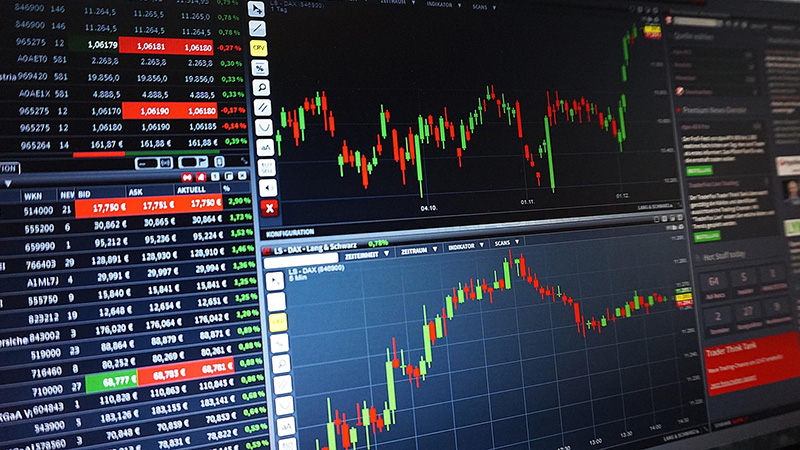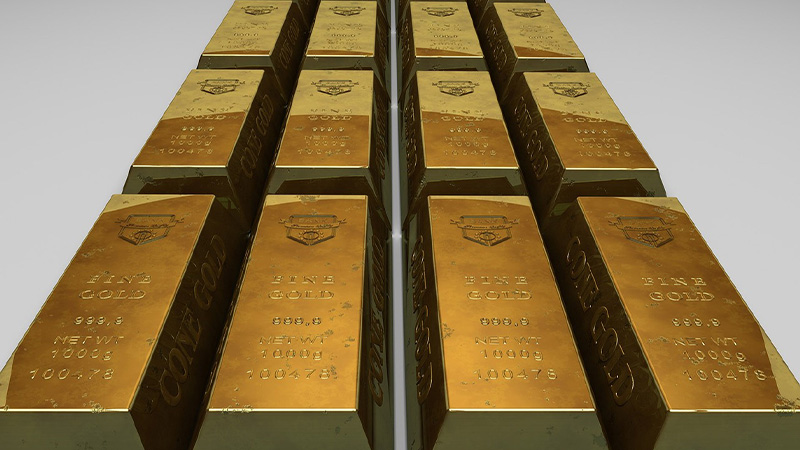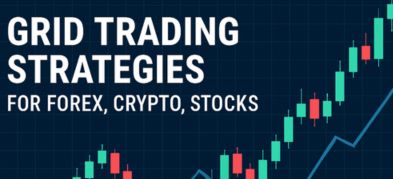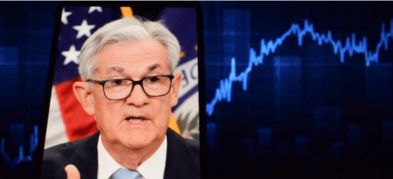Important Information
This website is managed by Ultima Markets’ international entities, and it’s important to emphasise that they are not subject to regulation by the FCA in the UK. Therefore, you must understand that you will not have the FCA’s protection when investing through this website – for example:
- You will not be guaranteed Negative Balance Protection
- You will not be protected by FCA’s leverage restrictions
- You will not have the right to settle disputes via the Financial Ombudsman Service (FOS)
- You will not be protected by Financial Services Compensation Scheme (FSCS)
- Any monies deposited will not be afforded the protection required under the FCA Client Assets Sourcebook. The level of protection for your funds will be determined by the regulations of the relevant local regulator.
Note: Ultima Markets is currently developing a dedicated website for UK clients and expects to onboard UK clients under FCA regulations in 2026.
If you would like to proceed and visit this website, you acknowledge and confirm the following:
- 1.The website is owned by Ultima Markets’ international entities and not by Ultima Markets UK Ltd, which is regulated by the FCA.
- 2.Ultima Markets Limited, or any of the Ultima Markets international entities, are neither based in the UK nor licensed by the FCA.
- 3.You are accessing the website at your own initiative and have not been solicited by Ultima Markets Limited in any way.
- 4.Investing through this website does not grant you the protections provided by the FCA.
- 5.Should you choose to invest through this website or with any of the international Ultima Markets entities, you will be subject to the rules and regulations of the relevant international regulatory authorities, not the FCA.
Ultima Markets wants to make it clear that we are duly licensed and authorised to offer the services and financial derivative products listed on our website. Individuals accessing this website and registering a trading account do so entirely of their own volition and without prior solicitation.
By confirming your decision to proceed with entering the website, you hereby affirm that this decision was solely initiated by you, and no solicitation has been made by any Ultima Markets entity.
I confirm my intention to proceed and enter this websiteIn June 2025, international gold prices experienced a dramatic surge. As geopolitical tensions escalated in the Middle East, the London spot gold price soared to USD 3,444 per ounce, hitting a four-month high.
However, when Trump suddenly announced a comprehensive ceasefire agreement between Israel and Iran, gold prices plummeted 1.45% in a single day, falling below the USD 3,320 level.
This kind of sharp price swing has left countless investors unsettled, raising the pressing question: is now a good time to buy gold?

Gold at a Turning Point: Opportunity or Pitfall?
As of now, gold is struggling around the key support level of USD 3,320.
Technical indicators suggest this level has become a battleground between bulls and bears. If the daily close holds above it, a rebound could be triggered; if broken, prices may test the strong support zone of USD 3,260–3,280.
Behind this volatility lies a tug-of-war between multiple forces: expectations of a Federal Reserve policy pivot, continued gold buying by global central banks, and the rise and fall of geopolitical risk all push gold prices in different directions.
In such a complex market environment, simply asking “Is it time to buy?” is no longer sufficient.
Investors must delve deeper: where is the current gold price situated? What are the key factors influencing future movements? What strategies apply to different investment objectives?
More importantly, how can one capture gold’s unique value as a hedge and inflation buffer while controlling risk? These are the core questions this article aims to address.

Five Key Factors: Is Now the Right Time to Buy Gold?
Geopolitical Risk
Middle East volatility pushed gold’s price fluctuation rate up 35%. Historical data shows that during similar geopolitical tensions, gold has averaged annual gains of 12%–15%. Recently, both institutional and retail investors have shown a surge in demand for hedging. One platform reported a 200% year-on-year increase in gold CFD trading volume.
Central Bank Gold Buying and Monetary Realignment
In 2025, global central banks maintained gold purchases above 1,000 tons. China increased its gold reserves for five consecutive months. This accumulation reflects a broader move to diversify away from fiat currencies, providing long-term support for higher gold price levels.
Fed Rate Cuts and Real Yield Compression
Expectations for rate cuts by the Federal Reserve continue to rise, lowering the opportunity cost of holding gold. According to model estimates, if the 10-year U.S. real yield falls from 2% to 1.5%, the theoretical allocation value of gold could increase by 20%.
Tight Physical Supply and Longer Delivery Time
- Supply: London vault inventories are critically low, extending gold delivery wait times to 4–8 weeks.
- Demand: Global gold ETF holdings reached 3,680 tons, and monthly participation in gold accumulation plans has risen by 35%.
Technical Battle at Key Levels
USD 3,320 is the line of demarcation. Holding above it could pave the way to USD 3,400; a breakdown may lead to USD 3,260–3,280. Technical indicators show the RSI has entered the oversold zone, suggesting rebound momentum exists.

Practical Strategies for Three Types of Investors
Short-Term Traders: High Leverage to Capture Volatility
- Entry Logic: Use USD 3,320 as the base level, adopt a “tiered position building + trailing take-profit” strategy. Increase positions on a breakout above USD 3,350; stop loss below USD 3,300.
- Recommended Tool: Gold futures CFDs (spreads as low as USD 0.1), support for 1–100x leverage, suitable for T+0 trading. Click to try the professional trading platform.
- Risk Reminder: Position size should be ≤10%. Use the platform’s “negative balance protection” to manage risk.
Medium-to-Long-Term Allocators: Dollar-Cost Averaging + Trend Following
- Entry Strategy: Activate the “smart investment plan” — automatically invest monthly at USD 3,300, add on dips to USD 3,200 to average cost while tracking the trend.
- Tool Selection: Gold ETF-linked products (index-tracking with <0.3% premium) or bank accumulation gold. Use the platform’s price comparison tool to check real-time costs.
- Position Management: Allocate 10%–15% of total assets, dynamically adjust against other asset classes.
Hedgers: Physical Gold + Derivatives Hedging
- Entry Logic: Purchase 9999 fine gold bars (certified by central bank refineries) and simultaneously buy call options to hedge against price fluctuations.
- Key Reminder: Hedging allocation should be tailored to individual risk tolerance.

Comparison of Gold Investment Channels
| Channel Type | Traditional Bank | Exchange | Informal Platform | Professional Trading Platform |
| Transaction Cost | Premium of 8–15 TWD/g | 0.02% handling fee | High hidden fees | Low spreads (no extra charges) |
| Product Variety | Accumulation gold only | Futures / Spot | High-risk leveraged tools | Futures CFDs / Options / ETF-linked |
| Security | Central bank certified | Strictly regulated | License risks | Dual regulation, segregated funds |
FAQ
Q: How can beginners safely start investing in gold?
A: It is recommended to choose a properly regulated platform, begin with a demo account to gain experience, and start with small positions. Increase position size only after becoming familiar with the trading environment.
Q: Will gold prices fall below USD 3,000?
A: Fundamentally, strong support comes from global central bank gold purchases, de-dollarization trends, and tight physical supply. A fall below USD 3,000 would be considered an extreme scenario. If the Federal Reserve unexpectedly delays rate cuts, a short-term test of USD 3,100 is possible. However, medium- to long-term trends still point toward a gradual upward movement.
Q: Should I buy gold now? How to determine the right entry timing?
A: Watch for these three signals:
- Price support level: USD 3,320/oz is a key support zone (tested multiple times in 2025). If prices hold at this level, it may indicate a short-term entry point.
- Policy signals: The Fed is expected to cut rates twice this year. If a dovish signal is released or cuts are implemented, it could boost gold prices.
- Market sentiment: Global gold ETF holdings have reached 3,680 tonnes (a three-year high). Ongoing institutional inflows suggest a bullish long-term outlook, supporting a strategy of phased buying on pullbacks.
Conclusion
Whether you’re a beginner or a seasoned investor, the key to gold investing lies in aligning your personal risk tolerance with sound market logic.
With the battle for the USD 3,320 support level still underway, the coexistence of short-term volatility and long-term trends calls for strategic planning. Leverage the tools of a professional platform to navigate uncertainty and unlock the hedging value of gold.
Disclaimer: This content is provided for informational purposes only and does not constitute, and should not be construed as, financial, investment, or other professional advice. No statement or opinion contained here in should be considered a recommendation by Ultima Markets or the author regarding any specific investment product, strategy, or transaction. Readers are advised not to rely solely on this material when making investment decisions and should seek independent advice where appropriate.












